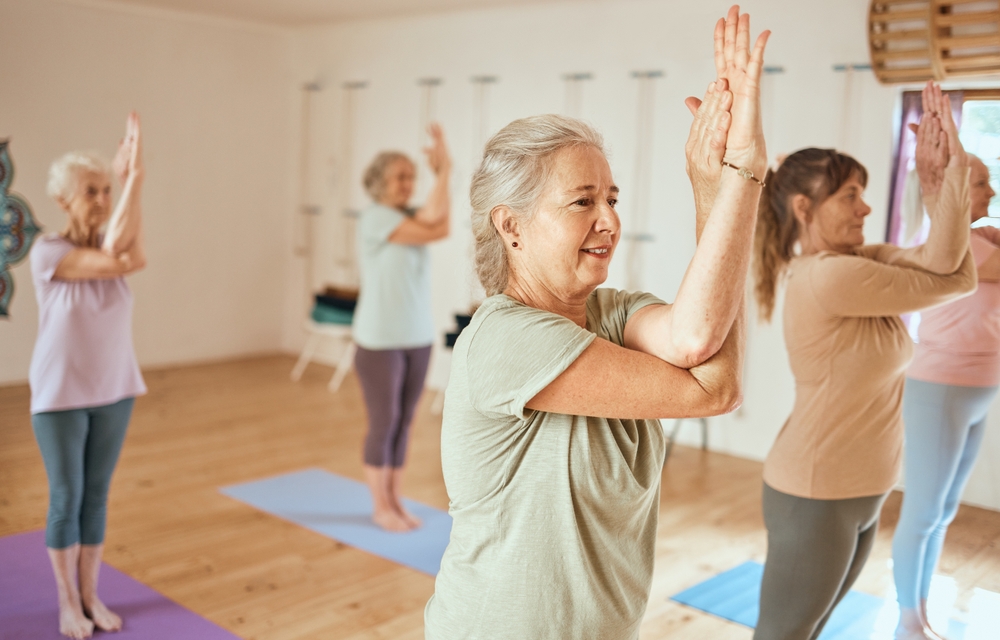Experience the Joy of Zumba for Seniors: A Fun and Effective Way to Boost Fitness and Well-Being in 2025
As we embrace 2025, more seniors are discovering the exhilarating benefits of Zumba, a dance-based exercise program specifically adapted for older adults. This Latin-inspired fitness phenomenon combines energetic music with low-impact movements, offering a perfect balance of physical activity and enjoyment. For those seeking to enhance their health while having fun, Zumba for seniors presents an accessible option that addresses multiple aspects of well-being simultaneously.

As we age, finding enjoyable ways to stay active becomes increasingly important for maintaining health and independence. Zumba for seniors has emerged as a popular option that combines the benefits of cardiovascular exercise with the joy of dance and social interaction. In 2025, specialized programs like Zumba Gold are making this fun fitness approach more accessible than ever to older adults seeking to improve their physical and mental well-being through movement.
What Makes Zumba Gold Different for Older Adults?
Zumba Gold is specifically designed with seniors in mind, offering modifications that make the original high-energy dance workout safe and effective for older participants. The program features slower-paced movements with less impact on joints, making it accessible even for those with mobility concerns. Instructors are specially trained to understand the unique needs of senior participants, including balance considerations and appropriate exercise intensity.
Unlike traditional exercise programs that may feel like work, Zumba Gold maintains the party-like atmosphere that makes Zumba famous while ensuring movements are appropriate for older bodies. Classes typically run 45-60 minutes, incorporating easy-to-follow choreography that can be adjusted based on individual fitness levels. The focus remains on enjoyment rather than perfect execution, creating a pressure-free environment where seniors can move at their own pace.
The Benefits of Zumba for Seniors
Regular participation in Zumba Gold offers numerous health advantages particularly valuable for older adults. From a physical perspective, these dance-based workouts improve cardiovascular health, increase muscle strength, and enhance flexibility—all crucial components for maintaining independence as we age. The varied movements also help improve coordination and balance, potentially reducing fall risk, a significant concern for seniors.
Beyond physical benefits, Zumba provides substantial cognitive advantages. Following dance patterns and remembering choreography sequences stimulates brain function, potentially supporting cognitive health. Research suggests that dancing may be particularly effective at combating age-related cognitive decline compared to other forms of exercise, as it combines physical activity with mental engagement and social interaction.
The social aspect of Zumba cannot be overlooked. Regular classes create community connections and combat isolation, which is particularly important for older adults. Many participants report that the friendships formed in class become a primary motivation for continued attendance, highlighting how the social benefits complement the physical advantages.
How to Find Senior-Friendly Zumba Classes in Your Area
Finding appropriate Zumba Gold classes has become easier in 2025, with more options available than ever before. Senior centers, community recreation facilities, and fitness clubs frequently offer specialized programs. When searching for classes, look specifically for “Zumba Gold” in the description, as this designation ensures the program is tailored for older adults.
Before committing to a program, consider visiting a class to observe or participating in a trial session. This allows you to assess whether the instructor’s teaching style and the class atmosphere meet your needs. Important factors to consider include the instructor’s experience with senior participants, music volume, floor surface (avoid concrete), and availability of chairs for balance support if needed.
Many locations now offer virtual Zumba Gold options as well, making this exercise accessible even for those with transportation challenges or those who prefer exercising from home. Online platforms dedicated to senior fitness have expanded significantly, providing high-quality instruction with senior-specific modifications.
Getting Started with Zumba at Any Age or Fitness Level
One of Zumba Gold’s greatest strengths is its accessibility for beginners and those returning to exercise after a long break. No previous dance experience is required—instructors break down movements into simple steps before combining them with music. The “follow the leader” format means participants can join at any time without feeling behind.
For those concerned about their current fitness level, it’s important to note that Zumba Gold is designed to be adaptable. Participants are encouraged to modify movements based on their comfort level and physical capabilities. Many instructors demonstrate alternatives for those with joint issues or limited mobility, ensuring everyone can participate safely.
Before beginning any new exercise program, consulting with a healthcare provider is recommended, particularly for those with pre-existing health conditions. Many physicians now actively recommend Zumba Gold as a safe, effective exercise option for older adults, recognizing its balanced approach to fitness.
Cost Comparison of Senior Zumba Programs in 2025
Finding affordable Zumba Gold classes is important for many seniors on fixed incomes. The cost of classes varies significantly based on location, facility type, and program structure. Below is a comparison of typical options available in 2025:
| Program Type | Provider Examples | Average Cost |
|---|---|---|
| Community Centers | YMCA, JCC, Parks & Recreation | $5-10 per class or $30-60 monthly |
| Senior Centers | Area Agency on Aging, Senior Resource Centers | $3-7 per class or free with membership |
| Fitness Clubs | Silver Sneakers, Silver&Fit, Planet Fitness | Included with membership ($25-65/month) |
| Virtual Classes | Silver Sneakers LIVE, Zumba.com | $5-15 per class or $20-40 monthly subscription |
| Medicare Advantage | UnitedHealthcare, Humana, Aetna | Often included in fitness benefits |
Prices, rates, or cost estimates mentioned in this article are based on the latest available information but may change over time. Independent research is advised before making financial decisions.
Many seniors may not realize that their health insurance or Medicare Advantage plans often cover fitness programs, including Zumba Gold classes. Additionally, senior centers frequently offer discounted rates or scholarships for those with financial constraints. Some programs offer package deals that reduce the per-class cost significantly compared to drop-in rates.
Creating a Sustainable Zumba Routine for Long-term Health
Consistency is key to experiencing the full benefits of any exercise program. For seniors new to Zumba, starting with one or two classes weekly is often recommended, gradually increasing frequency as fitness improves. Many participants find that scheduling classes on specific days creates a routine that’s easier to maintain.
Complementing Zumba with other forms of exercise can create a well-rounded fitness program. While Zumba excels at providing cardiovascular benefits and improving coordination, adding strength training and dedicated flexibility work can enhance overall fitness. Many seniors find that Zumba provides the enjoyable foundation that makes their entire exercise routine sustainable.
As we move through 2025, the growing popularity of Zumba among seniors reflects its effectiveness at addressing multiple aspects of aging well—physical health, cognitive stimulation, and social connection. By embracing this joyful approach to fitness, older adults are discovering that exercise doesn’t have to feel like a chore but can instead be a highlight of their weekly routine, contributing significantly to their quality of life and independence.
This article is for informational purposes only and should not be considered medical advice. Please consult a qualified healthcare professional for personalized guidance and treatment.




